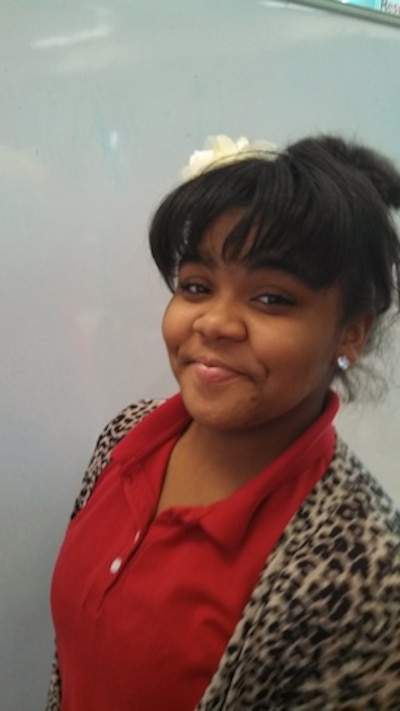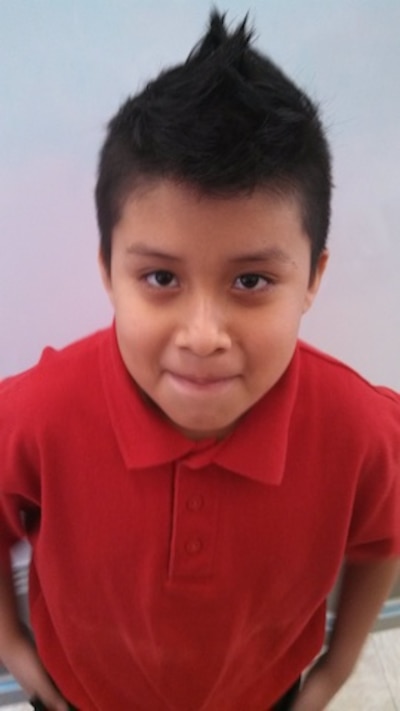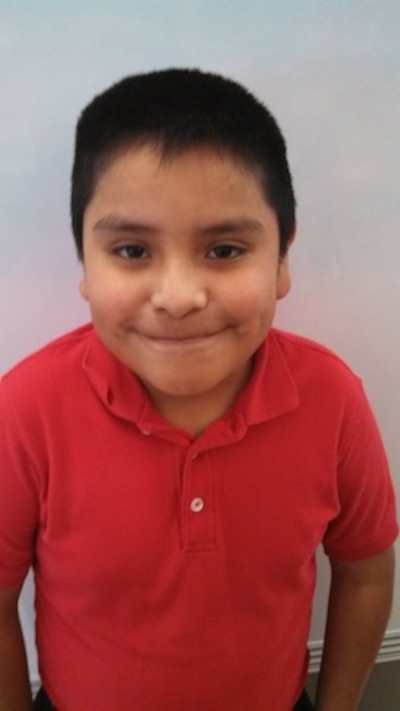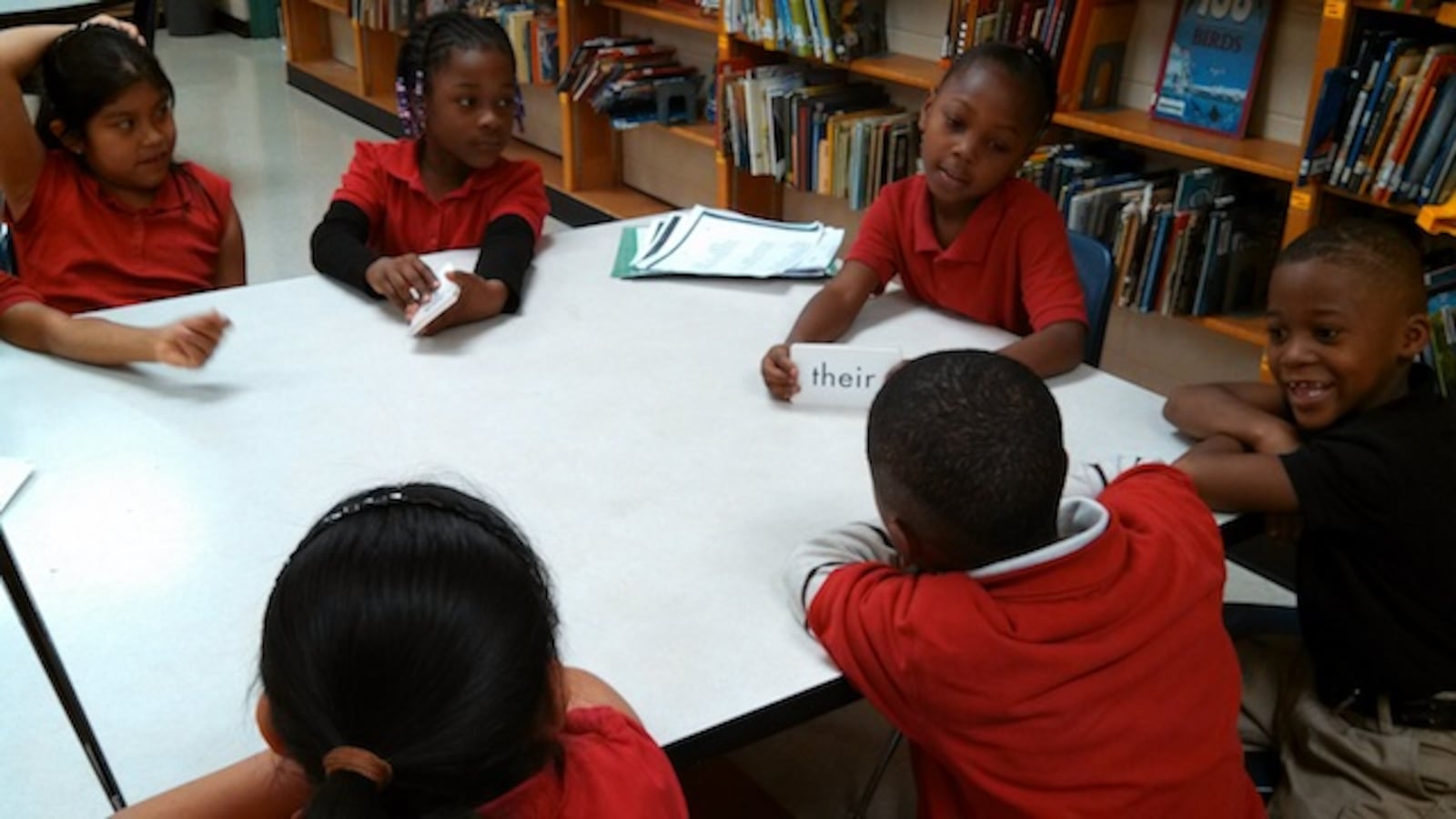More than 70 percent of Sharpe Elementary’s students read below their grade level.
It was a troubling statistic for principal Gary Zimmerman and his staff.
In the last 12 years he’s been the principal, his school has met its academic goals, but Zimmerman said it’s not acceptable that barely 30 percent of his students are proficient or advanced readers.
At the beginning of the school year, more than 70 percent of the school’s kindergarteners and second graders were not reading at their grade level, and more than 60 percent of first and third graders were below grade level. Nearly all of the schools’ fourth and fifth graders were not reading at their grade level.
The push to turnaround the school is evident in the work that goes on in the classrooms before and after school and even on the weekends. It’s hard for anyone visiting the school to miss the vocabulary-covered walls that resemble a never-ending sentence.
Sharpe’s story is only a snapshot of Shelby County Schools’ overall push to address the district’s literacy problem. According to a study of third-grade readers across the district, 61 percent of the students were not reading on grade level. District administrators and board members are concerned about this problem because education research has shown if a student is not reading at grade level by the third grade, the student will not graduate high school on time, according to a national study commissioned by the Annie E. Casey Foundation.
The study says the dropout rates are highest for the low and below-basic readers with 23 percent of the children dropping out of high school or failing to finish on time. The dropout rate for children with basic reading skills is 9 percent and 4 percent for proficient readers.
Memphis is one of the least literate cities in the country, according to a literacy survey conducted by Literacy Mid-South.
Almost a third of adults read at or below a third-grade level and 41 percent of adults have less than high school diploma or GED, according to Literacy Mid-South.
“We’re fighting demographics,” Zimmerman said. “Some of our children leave our schools and they go home and there’s not a lot of help. We can only do so much in the seven hours that we have them, so there’s a gap all of the time.”
Sharpe Elementary’s goal is to increase student literacy from 28.1 to 45 percent – a 60 percent jump – on this year’s annual state tests.
The school’s goal is aggressive and higher than the state’s target, which is 32.5 percent of students reading on a proficient or advanced level.
Zimmerman, Sharpe’s principal, said considering the progress students have made so far, higher expectations are achievable.
Students are monitored regularly to gauge their progress.
This month’s testing showed that 70 percent of kindergarteners and fourth grade students reading below grade level in October decreased by 43 percent. The 60 percent of first and third graders reading below grade level decreased by 36 percent and 12 percent, respectively. Fourth graders made significant progress as well, cutting the percentage of below basic readers from 95 percent to 54 percent. The percentage of below basic fifth grade readers dropped from 100 to 65 percent.
Zimmerman said the progress is a reflection of the school’s efforts.
“If you only reach for the minimum, then you get minimum results,” he said. “Forty-five percent of students reading proficient or advanced isn’t the best when you consider half of the students are still reading at a basic or below basic level. This is hard work and we’re doing all we can.”
In October, Sharpe Elementary started the Emerging Readers Saturday School program for students that were reading below their grade level. The program is funded with federal Title I money, which can be used for extended school day programs, Zimmerman said.
School officials couldn’t enroll the entire school in the Saturday program, so they specifically targeted students they felt needed the most immediate help.
All the students will stay in the program for the remainder of the school year and Zimmerman is even looking into the possibility of offering a five- day, five-week summer reading program for students.
The students spend six-hours every Saturday, even during breaks, at the school practicing reading skills. Students receive computer instruction using a system called Istation, one-on-one and small group instruction, and they are given time to read independently.
Currently there are 22 students enrolled and there’s a growing waiting list.
The computer system, Istation, provides students with reading lessons that test their vocabulary and reading comprehension skills.
Stephanie Gatewood, the school’s family services specialist, is the facilitator of the program along with a classroom teacher and teacher’s assistant.
Gatewood is a former Memphis City School Board member and education researcher at the University of Memphis. She spends her days monitoring student progress, teaching lessons, conferring with teachers and students and reaching out to parents.
Fifth-grader Chasity Coleman didn’t want to come to Saturday school, but with Gatewood and her mother’s nudge, Coleman started the program in November.

“Sometimes I read too fast and I don’t remember everything,” said Coleman, 11. “Now, I know I need to read slower and focus.”
Coleman said her teachers are starting to notice an improvement in her classroom work. She’s growing to enjoy reading more and reads at least 20 minutes every night.
“I’m reading The Princess Diaries and Dork Diaries,” she said.
Gatewood said fourth grader Michael Gutierrez, another Saturday School student, is now reading on his grade level after being behind earlier in the school year.
“When I started, I didn’t like to read,” said Gutierrez, 9. “But now I do. I like to write, but spelling is hard.”
It’s the opposite for third grader Rolando Pastor, 8, who finds it difficult to write his sentences while spelling has become his fastest growth area.
Every day at Sharpe, students begin the day with a 90-minute reading block. Some students receive small group instruction and other students receive before- and after-school tutoring.


The school’s commitment to improving literacy not only prompted the start of Saturday school for Emerging Readers, but also a small library in the cafeteria.
Gatewood’s office, located in the school’s cafeteria, has several computer terminals set up for students to grab a quick lesson during lunch time. She also has a library for students to check out books, but not only just to read and return.
Gatewood uses a notecard system requiring students to write all of the words they didn’t know in the book, write its definition on the notecards and turn the cards in when they return the book.
If a student returns a book without any notecards sticking out, Gatewood says she’s quick to correct them.
Last week in Ikeysha Hall’s fourth grade science class, Gatewood reviewed an Istation lesson with the students. Students had to define several words from the lesson on marine life.
“I’m doing this work because it’s important,” Gatewood said. “We have a reading deficit, specifically in vocabulary. That’s why we have a school-wide push to strengthen vocabulary. Children deserve a quality education.”


